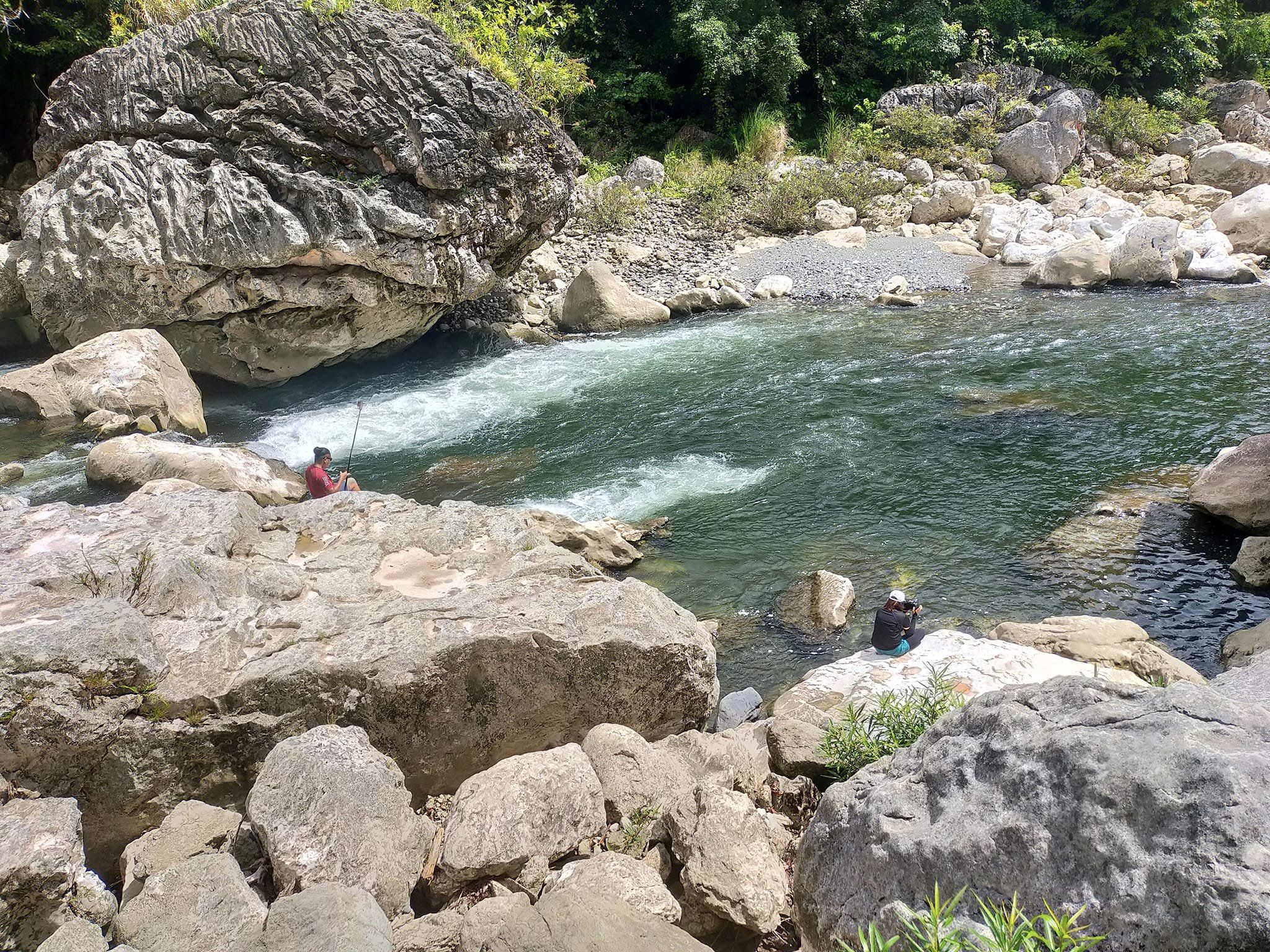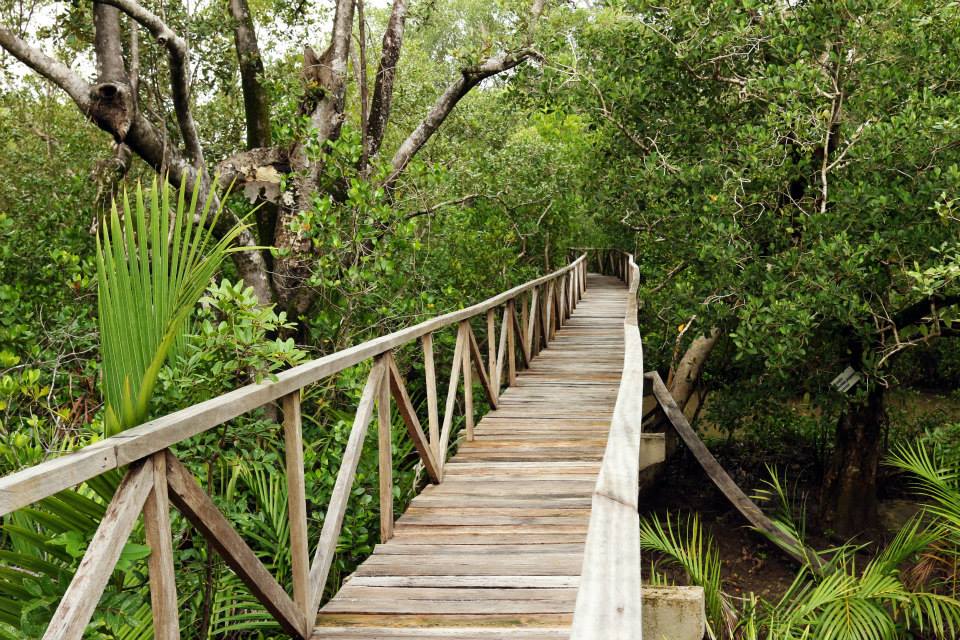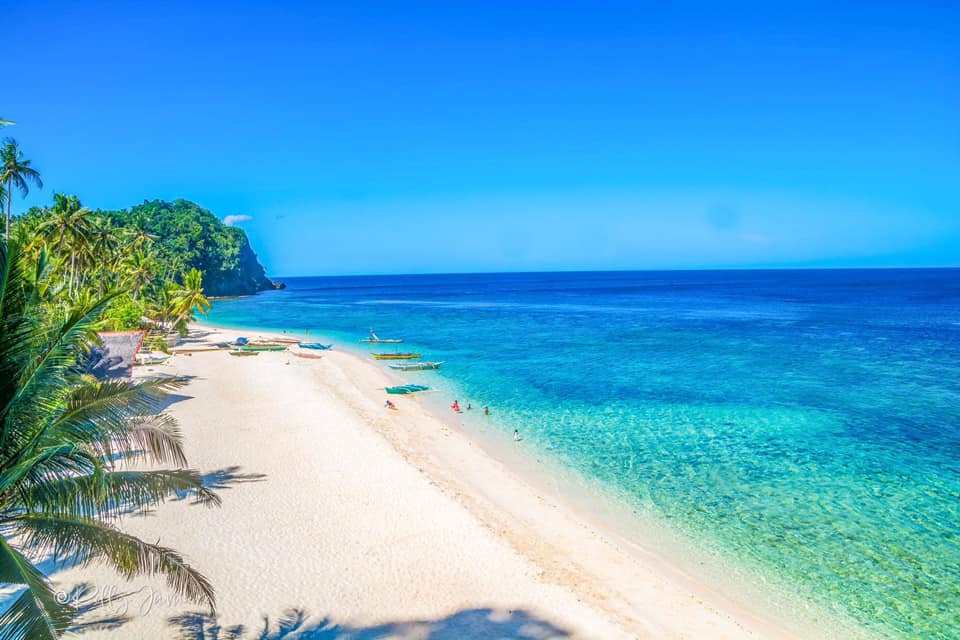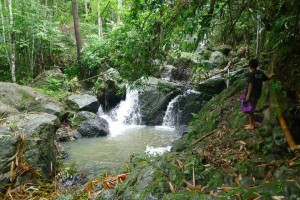Aklan is home of Boracay Island, the best beach in the world, famous for its sugar-fine, white sand, and amazing sunset.
It is also home to the original Kalibo Sto. Niño Ati-atihan Festival, the dubbed “Mother of All Philippine Festivals.”
It is the province that produces the “Queen of Philippine Fabrics,” the exquisite Piña Cloth, made into classic gowns and barongs worn by dignitaries and high society figures on special and momentous occasions.
It offers delicious, mouth-watering dishes and delicacies, and its people – the Aklanons, are warm, friendly, and cheerful. So, who could ever resist loving Aklan?
Aside from the above-given reasons why tourists should love Aklan – be they domestic and foreign, the 17 municipalities of the province from Altavas in the east to Buruanga in the west, offer a variety of reasons why Aklan deserves to be loved as a whole.

It starts when one enters Aklan through Altavas, just seeing the marker at the boundary of the town and Capiz which says “Welcome to Aklan,” that prefaces the town’s verdant surroundings and green rice fields. Once explored even more, one will get to discover that it is also the home of “Tinagong Dagat,” a rich fishing ground fringed with lush mangroves and shared with two other municipalities – Batan and New Washington.
Altavas is the only town that produces “puto tostado,” a fried rice cake which is ideal for “pasalubong” and gifts, and is the town’s main attraction when participating at trade fairs of the provincial government.
Batan town, on the side, offers beautiful beaches and resorts. It has Ob-ob Hill,
with a beach beneath it that is ideal for beach lovers and water sports enthusiasts. Every January, it holds its version of the Ati-atihan Festival called “Malakara,” with choreographed dances in time to unique drum beats.
In Balete, one will be enthralled by rolling hills, meandering streams and rivers and lush forest. It has a “Basura Garden” that features a collection of artifacts, antiques, and recycled materials turned into works of the arts.
The town of Banga, on the other hand, is dubbed “Banga the Beautiful” and rightly so, it is home to Manduyog Hill, the go-to place during the Holy Week because of its Stations of the Cross. It is where the Aklan State University-(ASU) Campus sits, surrounded by trees, rendering a very cool and relaxing environment to students.
After Banga is Kalibo, the capital town of Aklan. Aside from the world-famous Kalibo Sto. Niño Ati-atihan Festival and the beautiful piña cloth, did you know that it has other wonderful things to offer? It has Tigayon Hill – the highest promontory in town.
Kalibo, being a lowland area, has a multi-awarded mangrove reforestation project which is the Bakhawan Eco-Park; Museo It Akean, the repository of Aklan’s rich cultural heritage; and the Aklan Freedom Shrine where Aklan’s nineteen martyrs are forever at rest.
Across the Kalibo Bridge is the municipality of Numancia, the “Lechon Capital of the Province.” It has also the century-old trees in Barangay Albasan, and oldest Aeta Village in the province.
Lezo, the town next to Numancia, is the original producer of “ampaw,” a signature delicacy of the Aklanon. It is also a clay pottery producer, sourcing the materials from the town itself, the rich clay deposits along its river bank. From this craft, the town conceptualized the “Bangayan Festival” to pay homage to this craft that has become an age-old source of livelihood for Lezeños.
The town of Malinao, a historic town, is the hometown off Candido Iban, a famous local Katipunero. It also has its

own Ati-atihan Festival, as well as the Pascua Sa Malinao Festival. It is also a main producer of abaca products in Aklan.
The town next to Malinao is Madalag, a town of untouched rainforest of rolling hills, and offers the Liktinon White Rocks. It has conceptualized a unique festival of its own – the Tinuom ni Aewag Festival, which features an array of food wrapped in banana leaves and cooked over charcoal – like native chicken, freshwater fish, or shrimps.
After crossing the Aklan River from Madalag, the town of Libacao awaits the adventurous wanderer. The municipality is the Waterfall Capital of Panay Island, having more than 60 of these falls in various areas of the town. Libacao is where the headwaters of the Aklan River originated. One of its attractions during its town fiesta is the “Baesa Parada” where all barangays display their produce.
Meanwhile, the town of New Washington is a rich fishing ground of the province. It offers the best oysters and other seafoods which could be enjoyed at the Talabahan Village that sprouted at the Barangay Tambak Seawall. It is also the birthplace of Jaime Cardinal Sin, the former Archbishop of Manila. It hosts the Pink Sisters Convent and Chapel in Barangay Polo.

Going to the western portion of Aklan rests the town of Makato that has rows of fishponds, and green, green, rice fields that turn golden at harvest time. It has its own version of the Ati-atihan fixedly celebrated every 15th of January.
Tangalan is the town next to Makato, when one is on his/her way to Boracay Island. Tangalan has green mountains and rich fishing grounds. The town has beautiful beaches, and it is home to the famous Jawili Falls.
The town of Ibajay has its own version of Ati-atihan too, considered as the ethnic version, celebrated every 4th Sunday of January. It hosts the Katunggan it Ibajay, a mangrove forest with 28 mangrove
species, and is home to the very old and biggest api-api, a variety of mangrove tree in the Philippines.
Nabas is the town next to Ibajay. It is considered as the “Cold Spring Capital of Aklan” and celebrates its Bariw Festival to showcase the craftmanship and mat-weaving skills of its people. Woven mats, bags and hats made of bariw leaves were among its prominent products. It hosts the Pawa Wind Farm, so far said to be the biggest investor in the municipality and the province.
Malay, where Boracay Island is situated, is the town after Nabas. More than this prominent beach, the town likewise has other eco-tourism sites such as Agnaga Falls, Pangihan Cave with eight big chambers, and the Malay Ecological Park in Barangay Argao, serving as a spot where one can view Boracay Island from afar from the mainland.
Finally, the town of Buruanga, the last municipality in the western district and the farthest as well, has a rustic and rugged atmosphere. Its beaches are now becoming an alternative to other beaches in the province. It has Hinugtan Beach, which has an unspoiled beauty and is ideal for weekend getaways and vacation. It has Ashram Balay Pagduaw, a good place for meditation, relaxation, and retreat.
“This is Aklan, with a variety of beautiful sights, sounds, and experiences to offer,” said Aklan Provincial Tourism Officer Roselle Quimpo Ruiz, in assessing the tourism gains of the province.
Ruiz emphasized that there are many wonderful places in Aklan to complement the beauty of Boracay Island, hence, the Aklanons are inviting everyone to visit the province which is home of countless ecological sceneries and rich cultural festivities.
“Come, visit Aklan and eventually fall in LOVE with it, and with us,” she added. (AGP/VGV/PIA Aklan)



